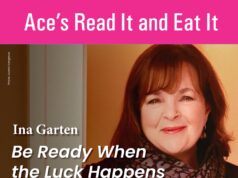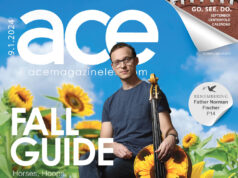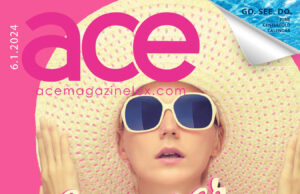The Naked Truth
A sneak peek at Nude 2010
by Kim Thomas
“I personally feel nude photography is one of the most challenging of subjects. You either end up with an aesthetically pleasing photograph…or a ‘naked picture’. There’s not much middle ground. I brought Ginger home as a piece of found art. She’s silver fiberglass and very modern looking. I realized early on that she would be a tremendous learning aide for figure photography – and she has been. She’s actually helped me ‘read’ light much better and to take time to examine every possible angle with my landscape, ‘people’, and street photography as well.”
 Lexington resident Earlane Cox’s use of a mannequin he calls Ginger (yes, Gilligan’s Island fans, that’s his inspiration) for his NUDE submission is interesting. He works at the National College in Hamburg and is the college’s Community Resource Coordinator, a medical faculty member since 1986. “I tell you that because I acquired Ginger from our old Main Street campus in 2001 after they eliminated their Fashion Merchandising program after twenty-plus years. The mannequin was used for dress designing! The Campus Director at that time closed the program due to waning interest over a few years. He called me one morning and told me to come and get her or she was going in the dumpster!”
Lexington resident Earlane Cox’s use of a mannequin he calls Ginger (yes, Gilligan’s Island fans, that’s his inspiration) for his NUDE submission is interesting. He works at the National College in Hamburg and is the college’s Community Resource Coordinator, a medical faculty member since 1986. “I tell you that because I acquired Ginger from our old Main Street campus in 2001 after they eliminated their Fashion Merchandising program after twenty-plus years. The mannequin was used for dress designing! The Campus Director at that time closed the program due to waning interest over a few years. He called me one morning and told me to come and get her or she was going in the dumpster!”
Cox has lived here since 1976, graduated that year from the University of the Cumberlands in Williamsburg, Kentucky with a Bachelor’s in Biology and Chemistry, thus the medical faculty position at National College. He’s been doing photography for more than 30 years and was admittedly not good at photographing living people, so Ginger allowed him to become a figurative artist.
“The difficulties? She is not flexible. She can’t change her poses. But this turned out to be a positive. It pushed ME to move, change positions, and be creative with a fixed object. So I learned to manipulate the lighting, her positions, her environment, and my angles. She literally has made me a much better photographer – teaching me to slow down and examine my subjects when I can.”
Another plus, he says, is that “NO live model would have the patience to do what Ginger does! My shoots with her can last hours and involve hundreds of exposures. A live model would suffer exhaustion, but I can shoot until I am exhausted!”
Cox is convinced his project with Ginger will never end. “Each morning or evening has different light – and the shots are always completely different.” He’s amused by the fact that “everyone who first sees or prints the photos simply refuse she’s not a real person! I have learned to keep an old picture of her in the car as proof! Then there are the looks I get when she travels with me! Yup, she sits in the front seat! Her torso separates from her bottom, so she fits perfectly!”
Cox is humbled to be recognized for his use of the fashion faux human form tossaway. “To actually think a fashion mannequin got me in the Nude is amazing. I just may transition to a real model one day!”
LAURA ALEX FRYE-LEVINE
Laura Alex Frye-Levine has four pieces in the exhibit. She is a photographer and filmmaker, putting on ecological twist on much of her creative work. She spends much of her time in coffee-producing communities in Honduras taking on issues of conservation and local livelihood. A lot of her work “strives to enhance understandings of the nature of humanity and the humanity in nature,” and the piece in Nude 2010 is her first foray into figurative work.
Frye-Levine grew up in Lexington, and explains,“I went to the Math & Science magnet program at Dunbar High School, but left in 1999. I suppose I have the “blood memory” of my Kentucky ancestry pulling me back to the Bluegrass after 10 years away! I feel blessed to live in such a beautiful region and am greatly encouraged by the myriad new artistic communities that have grown in my absence.”
She emphasizes that she made good use of those years, though, attended college in Massachusetts, spent a year volunteering on a community economic development project in Alaska, and returned to New England for graduate work. While working in Honduras as a conservation and development research manager as part of her masters’ thesis at Yale, she became quite interested “in the goals of international development and how they relate to our cultural interactions with nature.
“In the United States, we are in the infancy of understanding how to relate better, in an ‘environmental’ sense, with the natural world. Unfortunately, our culture sees solutions in a materialistic commercial sense. We may be interested in pursuing products that promise environmental responsibility, but ultimately we feel little emotional connection with the goods that make our lifestyle possible. More often than not, these goods are produced in developing countries at huge environmental and social cost. My work in El Merendon, a rural coffee producing area of Honduras 2 hours hike from the nearest road, started out as a research project to further the development plans for a newly established national park in the region. I was charged with producing reports on the social needs of the region. Fortunately for my creative pursuits- the project soon evolved into a fantastic opportunity photographically.”
She soon discovered that “the communities I was working in were doing just fine without international aid- what they needed far more than western-style development was our appreciation and understanding of their traditional lifestyle- one that worked within
the cycles of nature in subsistence agriculture and produced a small amount of supplementary income through smallholder coffee production. I came to realize that the documentation of my efforts and experiences in such a vibrant and isolated region couldn’t hope to make it past the eyes of those reading scientific journals unless I purposefully pursued the project in an innovative way that would be compelling to an American audience. If people in the United States are keen on voting with their dollars, I wanted to show them how very much even the smallest of their spending decisions really makes a difference to a family that relies on coffee production for income.”
As a successful fundraiser for two years at Yale, she returned to El Merendon three times to create a documentary about conservation and subsistence in the region. “The resulting film, Export (22 min), is still in post-production and has been
screened at several national and international conferences (most recently in the summer of 2008 at the United Nations Environment Program in Nairobi). The film chronicles the struggle for survival in a Honduran mountain community faced with an increasingly commoditized lanscape. Export focuses on the laborious multi-step process of coffee production and its dissonance with traditional subsistence lifestyles. Though a family invests hundreds of hours in each bag of coffee (through picking, hulling, washing, drying, sorting, and delivering it by mule to a middleman tw hours away, they are at the mercy of arbitrary fluctuations in an international commodities market and are paid only about $0.35 per pound.”
Naturally, she has become close to the families throughout this process of documentation (both through photography and film), “and they are well aware of what we pay for good coffee in the United States and how the commodity system cheats them out of the full value of what is actually a meticulously hand crafted value-added product. And the coffee is some of the most delicious I have tasted! If each family were paid a fair price for their product, it would have a tremendous effect on the community. Right now many of the fathers, sons, husbands, and brothers of the community are intent on attempting to make the perilous journey across Guatemala, Mexico, and the Rio Grand to try and make a few bucks in the United States. Many have already left – some have made it and some have never been heard from since. The people of El Merendon are well aware of the dangers of such a journey, but because they are paid so unfairly by US companies for their coffee, many feel they have no choice but to attempt to support their families by coming to work directly in the land of opportunity.”
“This is my first year back in Lexington, and my first time participating in LAL’s Nude exhibit. In the years that I was away, I became involved with the fledgling Kentucky Women Photographer’s Network (http://www.kywopho.com), and have exhibited in several of their photography shows over the past few years. That organization has really taken off- and I have been quite involved in the workshops and gallery shows that we offer. My primary interest has been in documentary photography and documentary film, so I am thrilled to have my newest work (Anamorph 1-4) selected for Nude 2010! This work is a new direction from the documentary genre- and I am excited to be exploring a similar theme through figurative work. I felt I needed the challenge to try my hand
at a different genre- and a good opportunity to use the human form in a somewhat abstract way to tell a universal story. The Anamorph series explores subject-object duality and our relationship to nature. I am interested in taking a step back and exploring the context of nature and our placement within it as a whole system- with dynamics that change depending on our viewpoints as individuals inextricably bound to a viewpoint within that system.”
ASHLEY WATSON
Ashley Watson is a vegan, feminist, animal rights activist and artist. She organizes the local animal rights group Animal-Ky, which works to better the lives of animals creatively. Two of her pieces from the collection “a bird at my table,” created out of a
generous grant from the Culture and Animals Foundation, were accepted into this year’s exhibit. They were no doubt inspired by her animal activism, as they transpose a Thanksgiving turkey with a human being.
Watson admits, “my activism is my artwork and my artwork my activism (although I do more traditional activism as well) and although I am vegan and hope to educate/challenge/stimulate others through my artwork I do not make work solely to ‘change’ people, rather I make work in attempt to change myself, to better understand, cope with and or survive. I am grateful when my work reaches a few people here and there who are moved by it in some way.” Her work has been greatly influenced by the feminist animal rights author Carol Adams, who has written many books which explore the inter-related oppression of women and non-human animals. “Although many people might look at these photographs and assume they were photoshopped, they are in fact real life shots. The black and white image in the background was back projected onto a screen, then I positioned my body carefully underneath the screen. Once the shot was set up and I was in the right position, my husband took the picture. It was a somewhat tedious and humorous process, but really vital to the work itself. Using my body and the physicality of the process is important to me. “
Watson was born and raised here in Lexington and was active in the craft scene, making jewelry and exhibiting at the Kentucky Guild of Artists and Craftsmen fairs. She also owned a glass-blowing studio for a bit, “but literally became burnt out by the monotony of it all. I am currently completing my undergraduate degree in Gender and Women’s Studies at UK and am pursuing art full time. I also have a local animal rights group that works on creative projects to better the lives of animals and am active in TNR (trap-neuter-release) for feral cats in Lexington.”
———————————————————
Submissions by Lexington area artists include works inspired by a wide array of subjects that vary from activism to fashion to ecology to biology and more. You can sample the naked truth they, along with 80
other artists bring to NUDE 2010 at Friday’s preview show, or bring the family out for the free exhibit at Loudoun House during its run.
NUDE 2010 will be on exhibit at LAL @ Loudoun House (209 Castlewood Dr., Lexington, KY) Jan. 16- March 27. LAL will host a special preview party on Jan. 15 at 6pm ($30 for supporters, $40 for potential supporters)








